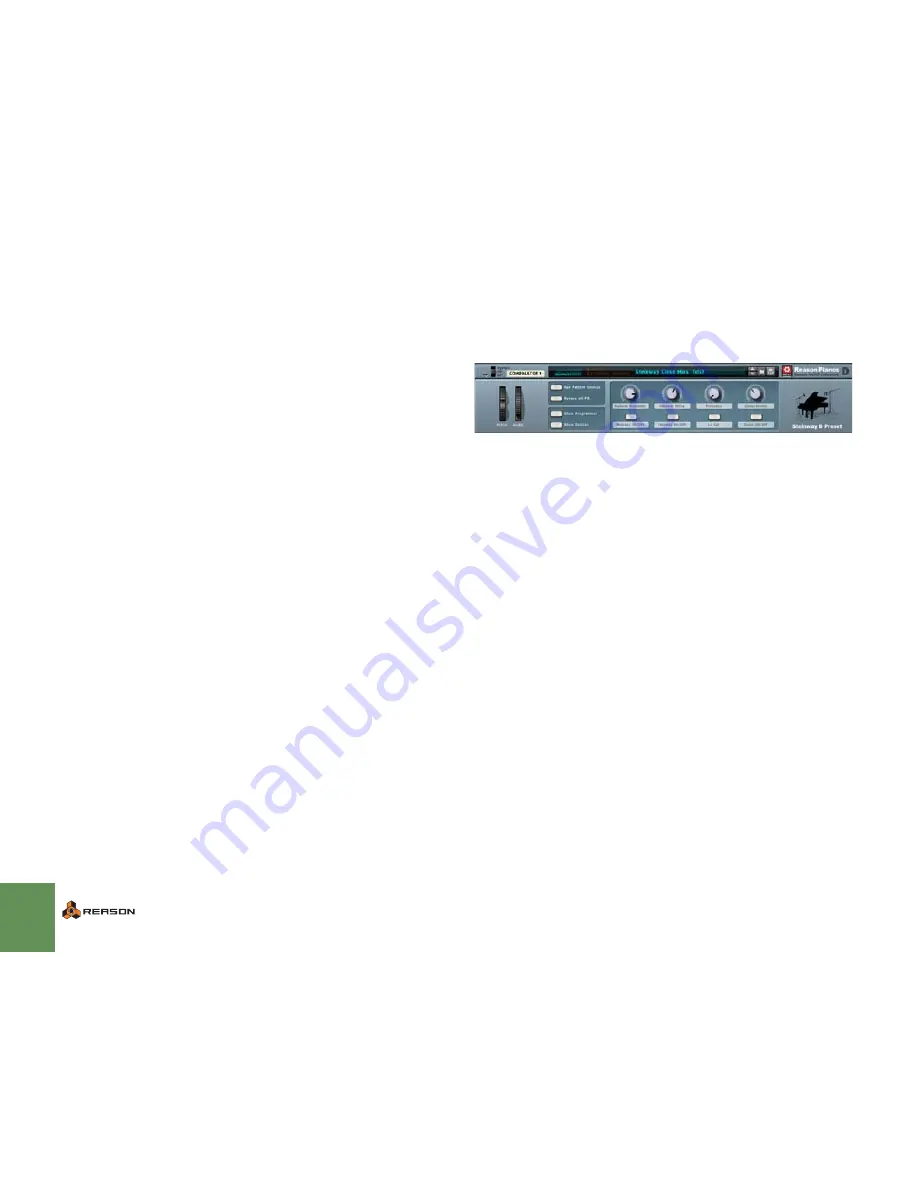
REASON PIANOS MANUAL
7
Using Reason Pianos
Reason Pianos offers a wide range of entry points in order to accommodate for
different needs. Here follows a summary of the ReFill contents:
Piano Patches
Inside this folder you'll find five subfolders. Four of them contain Combinator
patches - Preset, Producer, Style and Template patches. The fifth folder, Sepa-
rate Mics, contains the NN-XT patches which the Combinator patches are built
from.
D
Preset Pianos
The basic Combinator piano patches, offering our favorite microphone com-
binations.
D
Producer Pianos
Custom Combinator patches designed by professional music producers.
Some of these patches are quite large and feature elaborate configurations
with lots of effects, EQ etc.
D
Style Pianos
The Style Pianos are inspired by the piano sounds on classic songs, as indi-
cated by the patch titles.
D
Template Patches
Various Combinator templates where no NN-XT sampler patches are
loaded, the idea being that you can fill these with the mic combinations of
your choice. There is also a Combinator template designed especially for
use with ReWire.
D
Separate Mics
These NN-XT patches make up the building blocks for the Preset, Producer
and Style Pianos. Each of the three sampled pianos have six different NN-XT
patches, one for each microphone spot. You can use these patches to build
your own combinations (optionally using a Template patch as the starting
point) or to add a mic to an existing Combi preset.
Reverb Patches
A number of RV7000 reverb patches tailor made for acoustic pianos.
RPi ReWire Template.rns
A template song for use with ReWire. Here, the output of each microphone
goes to a separate output in the Reason Hardware Interface, allowing you to mix
the sound completely in the ReWire host application.
RPi Samples
The source samples.
The Combinator panel
The Preset Pianos are all based on a principle patch, a uniform Combinator
setup comprising of six NN-XT samplers (one for each mono microphone or ste-
reo mic pair), seven 6:2 mixers (one main mixer and six submixers, one for each
NN-XT), an MClass Compressor and an MClass Equalizer.
The purpose of having one submixer for each NN-XT is to separate the different
piano sound components (release resonance and hammer noise) on individual
channels.
D
Rotary 1 - Release resonance level
Controls the overall level of release resonance, i.e. the slight string and
soundboard resonance remaining after a key is released and the damper has
returned to its original position.
D
Rotary 2 - Hammer noise level
Controls the overall level of the hammer noise. When a piano key is released,
the return action of the hammer generates a slight noise. We captured the
hammer noise and included it as separate samples.
D
Rotary 3 - Presence amount
The presence effect enhances the "presence" of the sound by boosting cer-
tain frequencies in the 5000 Hz neighbourhood (the exact frequency varies
slightly between the instruments).
D
Rotary 4 - Compression amount
Controls the compression ratio and threshold.
D
Button 1 - Release resonance on/off
Enables/disables the release resonance.
D
Button 2 - Hammer noise on/off
Enables/disables the hammer noise.
D
Button 3 - Lo cut on/off
Cuts frequencies up to 100 Hz (varies slightly depending on instrument).
Use the low cut to make room for bass instruments in the mix.
D
Button 4 - Compression on/off
Toggles the compressor between on and bypass mode.
Summary of Contents for Reason Refill Series
Page 1: ......




























